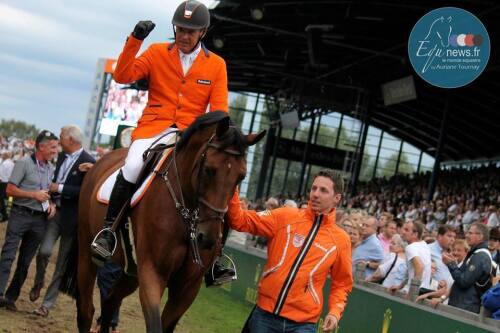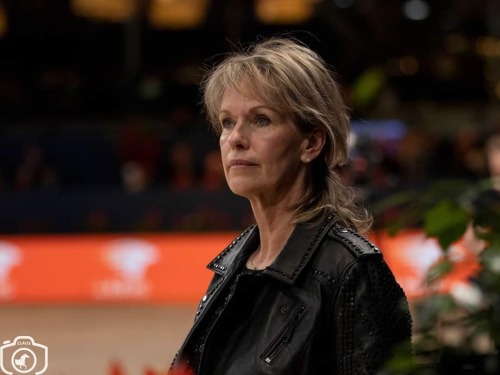This week coursebuilder Leopoldo Palacios has the difficult task to design teh courses for the exciting CSIO Spruce Meadows 'Masters' Tournament! "Spruce Meadows is a very traditional venue that preserves the tradition of equestrian sport. We try to be as natural as possible, with the venue actively recycling and protecting the environment. The fences we use at the CSIO Spruce Meadows ‘Masters’ Tournament set it apart from other competitions, with our signature long poles. The speed at which horse and rider combinations jump the fences here is faster than at other competitions, and the horses tend to jump really well."
For me, Spruce Meadows is one of the nicest venues to build courses. The Southern family, who own and manage it, are incredibly dedicated to the sport – they do so much. Rolex are also long-time supporters of Spruce Meadows, even before the Rolex Grand Slam of Show Jumping started in 2013. I love designing courses for the Rolex Grand Slam, and I am fortunate to have witnessed the only time the title was won, here at Spruce Meadows, when Scott Brash triumphed in 2015. It was one of the proudest and most memorable days of my life. I have designed courses for two Olympic Games and worked at several others, but that day when Scott won was a very special day for me. The atmosphere in the International Ring was incredible – Scott was the last rider to jump and during his round you couldn’t hear a pin drop. However, when he cleared the last fence and it became clear he had won the Rolex Grand Slam of Show Jumping, the crowd went wild. I got goosebumps in that moment.
You have received a number of fences from the Paris 2024 Olympic Games, with the Pont Alexandre III Bridge in use for this edition of the ‘Masters’ Tournament. Could you tell us about these fences, and how special the iconic group of fences are at Spruce Meadows.
The Spruce Meadows ‘Masters’ Tournament boasts the best collection of fences in the world. The Southern family have collected fences over the years, some dating back to Olympic Games in the 1970s, and we still use them today because they have been so well maintained. We have fences from most Olympic Games and World Championships since then, creating a fantastic collection. In this big arena, we use long poles which we create specifically for the fences, and I am very excited to use the fences from the Paris 2024 Olympic Games this year.
The CPKC ‘International’ Grand Prix, presented by Rolex at the CSIO Spruce Meadows ‘Masters’ Tournament is often considered to be one of the most challenging courses in the world, what makes it so tough to win?
I consider myself quite a traditional course designer. I use a variety of distances – short, long, and normal, and incorporate both ‘heavy’ and ‘light’ fences, aiming to test horse and rider combinations in every way. The tools I have to design the CPKC ‘International’ Grand Prix, presented by Rolex, are perfect for this. The collection of fences is incredible, and the team I work with here is brilliant. I have been working with some of the team members for over 20 years; we function like an orchestra.
This allows me to create a challenging course for the CPKC ‘International’ Grand Prix, presented by Rolex, which is designed to really test the horses without ever compromising a horse’s welfare. Striking the right balance between building a tough course and safeguarding the horses is always my top priority – the welfare of the horses is always at the forefront of my mind. The exceptional talent pool of riders that come here allows me to design such challenging courses – they bring their best horses, ready to tackle what’s often regarded as the most difficult course in show jumping.
Throughout the week at the CSIO Spruce Meadows ‘Masters’ Tournament, I prepare the horse and rider combinations for the Grand Prix on Sunday, getting them used to the ring and the fences. I don’t aim to scare the horses but instead to build their confidence leading up to Sunday. I am famous for designing tough courses, especially for the CPKC ‘International’ Grand Prix, presented by Rolex, and people often think all my courses are really hard. That isn’t the case! I just know this ring, I know the fences, and I know exactly how to use every spot.
Can you tell us a little bit about the course that you have designed for CPKC ‘International’ Grand Prix, presented by Rolex?
In the CPKC ‘International’ Grand Prix, presented by Rolex on Sunday, we will be using many wide oxers, more than most shows. The reason for this is the long poles we have, which allow the horses to jump with more width – they can fly!
In my opinion, incorporating width into show jumping makes the courses technically challenging. Another standout feature of Sunday’s competition will be the use of natural fences in the ring. For example, we have a real ditch and a real water jump, unlike the artificial ones used at other shows. This makes the CPKC ‘International’ Grand Prix, presented by Rolex, a very special class.
This year, in the first round of the class, the triple combination in a difficult place, and I have designed other tricky lines as well. In the second round, when the top 12 combinations compete, I will build the course based on how the horses are jumping and the conditions. For instance, today’s conditions are perfect; clear skies, no rain, and excellent light – which helps the horses jump better. However on Sunday, I will need to assess how the first round goes before determining the level of difficulty for the second round and how hard a course I can build.
What are the main things to consider when you are designing a course, and what do you hope to achieve?
For me, the foundation of designing a course is always the horses. When building a show jumping course, it is essential to consider that some horses jump better on the right rein, while others jump better on the left. As a result, I design half the course on the right and half on the left. Some horses jump vertical combinations better, whilst others prefer oxers, so I never repeat the same setup. Bigger horses like longer distances, while smaller horses like shorter ones, so when I design courses I incorporate a mix of long, short, and normal distances. I try to test horses and their riders in different ways, ensuring that no single aspect or test of the course dominates the challenge.



